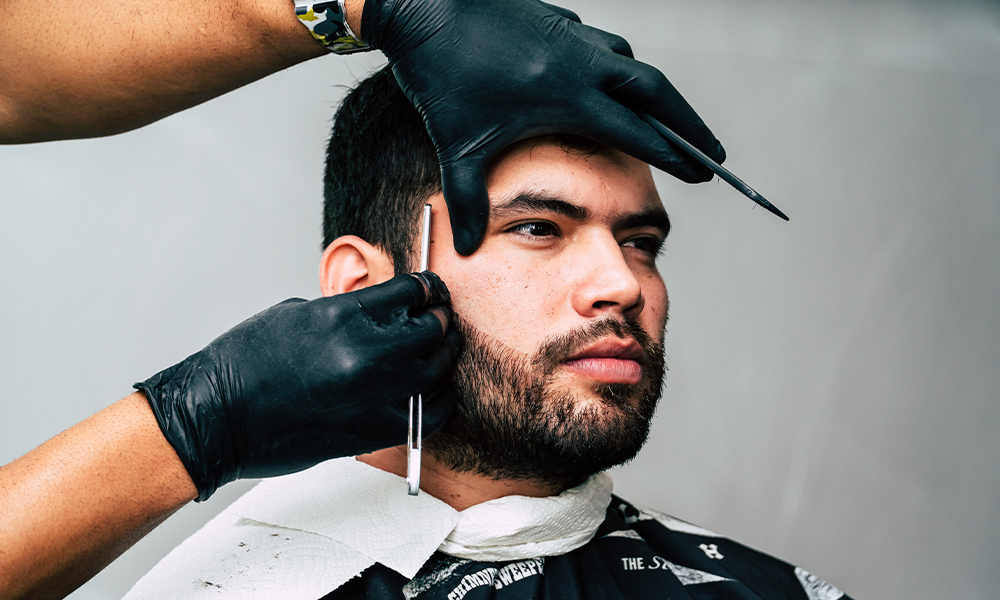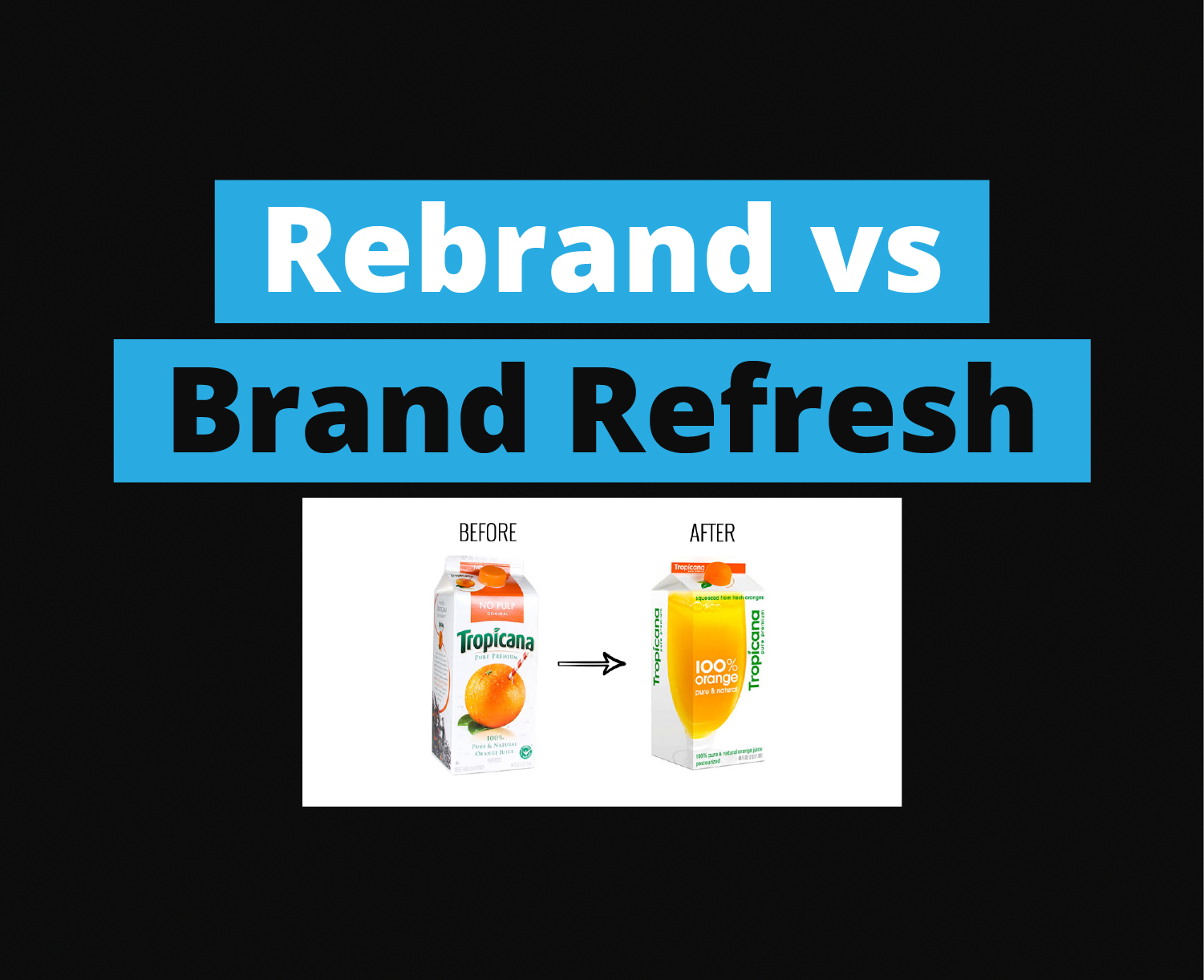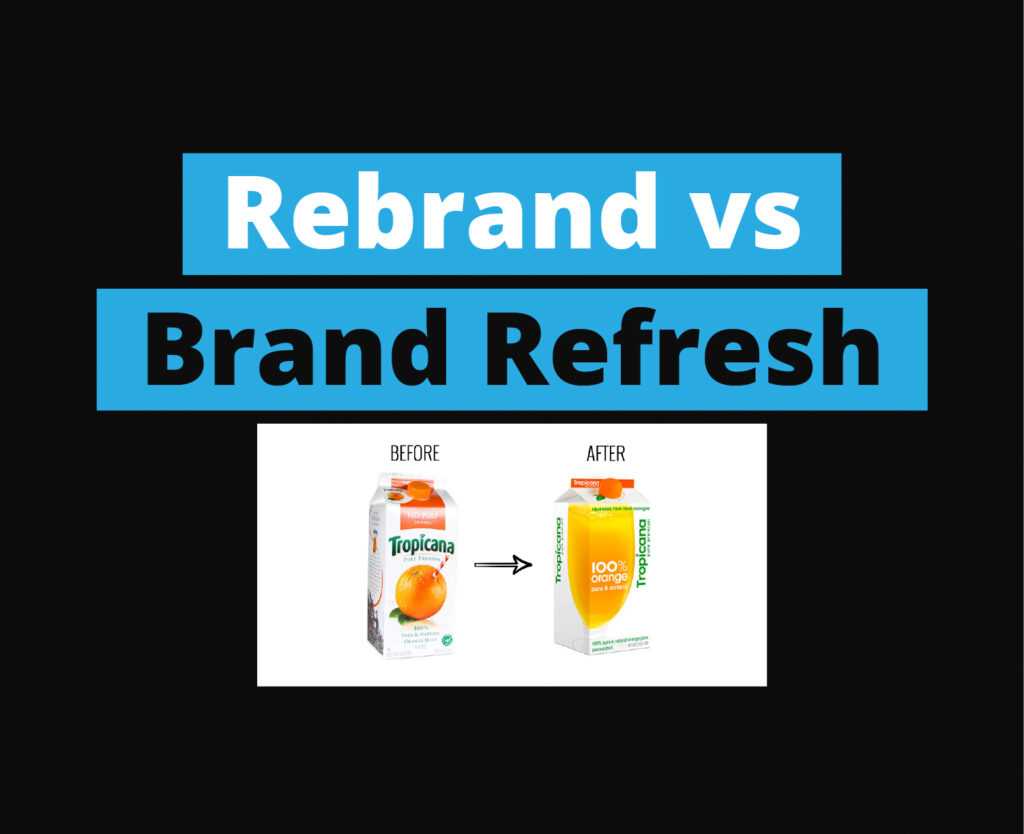
Brand Refresh vs Rebranding
Are you wondering what the difference is between a brand refresh and rebranding? Are you feeling like your brand is stuck in a rut? Are you starting to feel like you’re that one person at the party wearing mom jeans and a fanny pack? (Don’t worry, we won’t tell anyone). It might be time for a brand refresh or even a rebrand. But what’s the difference? And more importantly, how do you know which one is right for you? Don’t worry, I’ve got you covered with this lighthearted guide to sprucing up your business.
Brand Refresh
A brand refresh is like getting a new haircut or a fresh coat of paint. It’s a way to update your look without completely changing who you are. It’s perfect for businesses that are happy with their overall branding but just need a little touching up.
An example of a successful brand refresh is that of Starbucks. In 2011, Starbucks underwent a brand refresh as part of an effort to rejuvenate its image and connect with customers on a deeper level. One of the key elements was a new logo: Starbucks updated its iconic logo by simplifying the design, removing the word “coffee” from the logo, and making the iconic siren more prominent.

A brand refresh typically includes several key elements that are designed to update or modernize a brand’s image, without fundamentally changing the overall brand identity. Some of the key elements of a brand refresh may include:
- Logo update: A brand refresh may include updating the company’s logo, which may include making slight adjustments to the design or typography, or changing the color scheme.
- Brand messaging update: A brand refresh may include updating the company’s brand messaging, which may include changes to the tagline, mission statement, or the overall messaging and tone of the brand.
- Visual identity update: A brand refresh may include updating the visual identity of the brand, which may include changes to the color palette, typography, imagery, and overall design aesthetic.
- Website update: A brand refresh may include updating the company’s website to reflect the new visual identity and messaging of the brand, and to ensure that the website is responsive, user-friendly, and optimized for search engines.
- Social media update: A brand refresh may include updating the company’s social media profiles to reflect the new visual identity and messaging of the brand, and to ensure that the social media profiles are consistent with the overall brand image.
- Brand guidelines: A brand refresh may include the creation of new brand guidelines, which provide clear instructions on how the new visual identity should be used and applied across various mediums and platforms.
Click here to see the Brand Refresh we did for a client
Rebranding
Rebranding is like getting a whole new wardrobe. It’s a complete overhaul of your brand and is perfect for businesses that have undergone a significant change or are looking to reposition themselves in the market.

An example of a successful rebrand is AirBnB. In 2014, Airbnb underwent a significant rebranding effort in order to move away from its original image as a platform primarily for renting out spare rooms and to position itself as a more diverse and global travel company. The new logo features a symbol of a person’s head made of overlapping circles, representing the idea of belonging and connection.

A rebrand typically includes several key elements that are designed to fundamentally change a brand’s image and identity. Some of the key elements of a rebrand may include:
- New logo design: A rebrand may include creating a completely new logo design, which may include a completely new design, typography and color scheme.
- New brand messaging: A rebrand may include creating a new brand messaging, which may include changes to the tagline, mission statement, or the overall messaging and tone of the brand.
- New visual identity: A rebrand may include creating a new visual identity for the brand, which may include changes to the color palette, typography, imagery, and overall design aesthetic.
- New website design: A rebrand may include creating a new website design, which reflects the new visual identity and messaging of the brand, and ensures that the website is responsive, user-friendly, and optimized for search engines.
- New social media profiles: A rebrand may include creating new social media profiles that reflect the new visual identity and messaging of the brand, and ensure that the social media profiles are consistent with the overall brand image.
- New brand guidelines: A rebrand may include creating new brand guidelines, which provide clear instructions on how the new visual identity should be used and applied across various mediums and platforms.
- New product or service offerings: A rebrand may include introducing new product or service offerings, to better align with the company’s new identity and target market.
A brand refresh is like a makeover, it’ll give your brand a fresh look and make it relevant again. But if your brand is like that old sweater you’ve had since college and it’s time for a change of wardrobe, rebranding is the way to go! With a rebrand, you’ll be the new kid on the block, turning heads and making all the other brands jealous. Plus, you’ll be improving brand awareness and recognition, making customers loyal to your brand, and increasing profits. And let’s not forget, it’ll solve all those internal issues you’ve been ignoring, like lack of consistency and direction.
So how do you know which one is right for you? It’s simple, just ask yourself: “Do I want a new haircut or a new wardrobe?” If you’re happy with the overall look but just need a little update, go for a brand refresh. But if you’re ready for a complete change, it might be time for a rebrand. And remember, no matter what you choose, you’ll always look fabulous.
If you need help with Rebranding or Brand Refresh, Click Here





